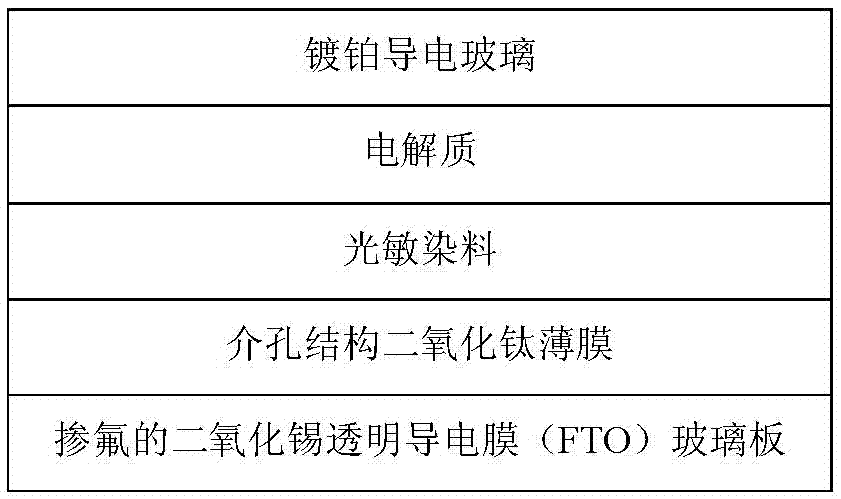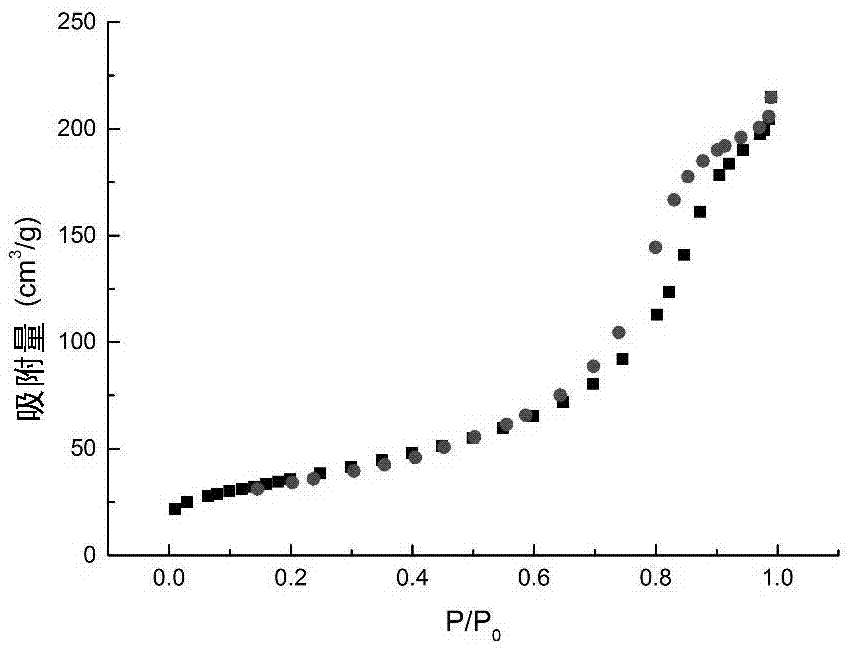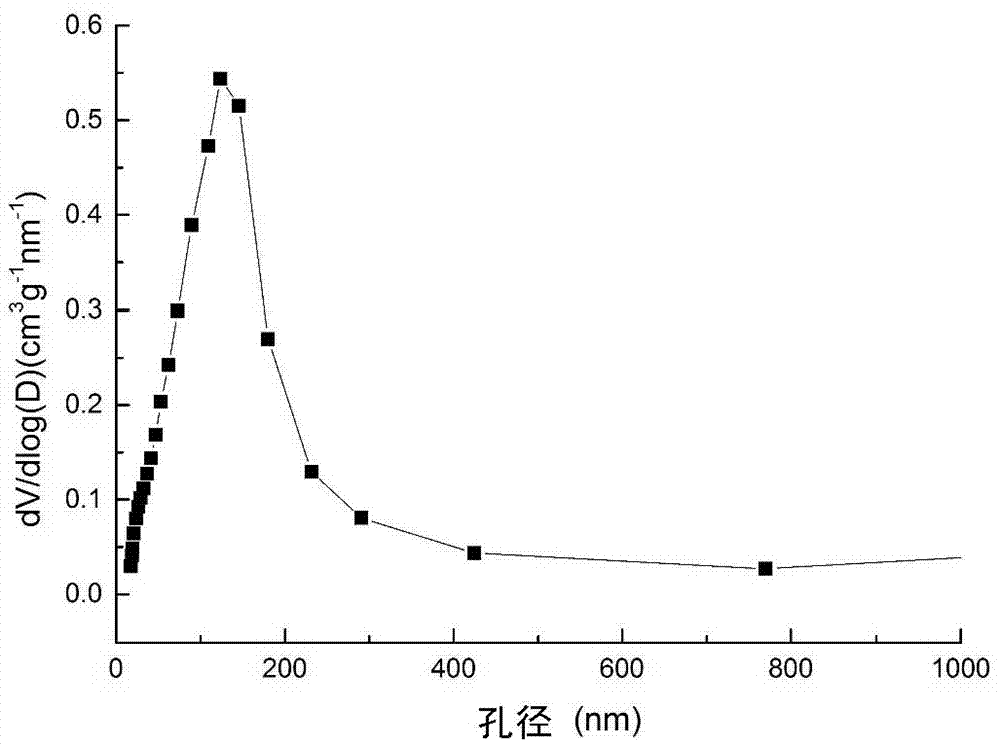Dye-sensitized solar cell photo anode and preparation method thereof
A technology for solar cells and dye sensitization, applied in the field of dye-sensitized solar cells, can solve problems such as cost, and achieve the effects of facilitating regulation and a simple and easy production method.
- Summary
- Abstract
- Description
- Claims
- Application Information
AI Technical Summary
Problems solved by technology
Method used
Image
Examples
Embodiment 1
[0048] (1) Using F127 [trade name: Pluronics is a water-soluble polyoxyethylene-polyoxypropylene-polyoxyethylene (PEO-PPO-PEO) three-stage copolymer] as a pore-forming agent, isopropyl titanate As a titanium source to prepare the precursor solution required for the photoanode, the specific steps include:
[0049] a) Add 22g (27.5ml) of absolute ethanol into 1.26g of pore-forming agent F127, stir evenly, and mark it as solution A;
[0050] b) Mix 3.36g of 37% hydrochloric acid solution with 1.5g of aqueous solution, marked as solution B;
[0051] c) Mix solutions A and B, stir until uniform, and mark it as solution C;
[0052] d) Slowly add 1.68 g of isopropyl titanate solution to the stirring solution C with a dropper, continue stirring for 2 hours until it becomes clear, and mark it as solution D, which is the precursor solution we need to prepare the photoanode ;
[0053] e) drying the solution D for sample preparation, figure 2 is the pore adsorption curve that charact...
Embodiment 2
[0076] Using P123 as a pore-forming agent, titanium tetrachloride and isopropyl titanate as a titanium source to prepare the precursor solution required for the photoanode, the specific steps include:
[0077]a) Add 1 g of pore-forming agent P123 to 20 g (25 ml) of absolute ethanol, stir for 30 min until uniform and clear, and mark it as solution A;
[0078] b) Slowly add 0.6 g (350 μl) of titanium tetrachloride with a pipette gun under stirring, and continue stirring until clarification;
[0079] c) Slowly add 1.7 g of isopropyl titanate with a pipette gun under stirring until it becomes clear, which is recorded as solution B; solution B is the precursor solution we need to prepare the photoanode.
[0080] (2) Using a pulling film machine to do fluorine (F) tin dioxide (SnO 2 ) transparent conductive glass (hereinafter referred to as FTO glass) made a single layer of mesoporous titanium dioxide (TiO 2 ):
[0081] a) Select a piece of FTO with a single area of 1.5cm*2.5cm...
PUM
| Property | Measurement | Unit |
|---|---|---|
| thickness | aaaaa | aaaaa |
| thickness | aaaaa | aaaaa |
Abstract
Description
Claims
Application Information
 Login to View More
Login to View More - R&D
- Intellectual Property
- Life Sciences
- Materials
- Tech Scout
- Unparalleled Data Quality
- Higher Quality Content
- 60% Fewer Hallucinations
Browse by: Latest US Patents, China's latest patents, Technical Efficacy Thesaurus, Application Domain, Technology Topic, Popular Technical Reports.
© 2025 PatSnap. All rights reserved.Legal|Privacy policy|Modern Slavery Act Transparency Statement|Sitemap|About US| Contact US: help@patsnap.com



